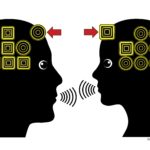Teachers like research-informed guidance because it offers a measure of certainty.
“Why do you run your classes that way?”
“Because RESEARCH SAYS SO!”
Alas, we occasionally find that research encourages AND DISCOURAGES the same strategy simultaneously.
What to do when expert advice differs?
In fact, I got this question on Thursday during a Learning and the Brain Summer Institute. Here’s the setup.
“Difficult” Can be Good
Regular readers know that desirable difficulties help students learn. As explained by Bob Bjork and Elizabeth Ligon Bjork — and researched by countless scholars — some degree of cognitive challenge enhances long-term memory formation.
In brief: “easy learning doesn’t stick.”
And so: why do spacing and interleaving help students learn? Because they ramp up desirable difficulty.
Why is retrieval practice better than simple review? Because (among other reasons) review isn’t difficult enough. Retrieval practice, done correctly, adds just the right amount of challenge.
And so, if you attend Learning and the Brain conferences (like this one on “Teaching Thinking Brains”), or if you read any of the great books about long-term memory formation, you’ll hear a lot about desirable difficulty.
Memory at Work
Cognitive scientists who don’t focus on long-term memory might instead focus on a distinct mental capacity: working memory.
Working memory allows us to gather information — facts, procedures, etc. — into a mental holding space, and then to reorganize and combine them into new patterns and ideas.
In other words: it’s absolutely vital for thinking and learning. If students are learning academic information, they are using their working memory.
Alas, all this good news comes with some bad news: we don’t have much working memory. And, our students probably have less than we do. (For evidence, try this mental exercise: try alphabetizing the workdays of the week. No problem alphabetizing 5 words? Now try alphabetizing the twelve months of the year. OUCH.)
For this reason, effective teachers pay scrupulous attention to working memory load. Every time we go beyond working memory constraints, we make learning MUCH HARDER.
In fact, I think working memory is so important that I wrote a lengthy series of blog posts on the topic. I’m kind of obsessed. (Heck: I even wrote a book on the topic, called Learning Begins.)
Trouble in CogSci Paradise
Because both topics — desirable difficulties and working memory — provide teachers with important and powerful insights, I devoted much of last week’s workshop to them. Almost every day, in fact, we talked about both.
On Thursday, one participant asked this wise and provocative question:
Wait a minute. You’ve told us that desirable difficulties help learning. And you’ve told us that working memory overload hinders learning.
But: isn’t desirable difficulty a potential working memory overload? Don’t those two pieces of advice conflict with each other? Won’t “spacing” and “interleaving” vex working memory?
Yes, reader, they certainly might.
So, what’s a research-focused teacher to do? Team Desirable Difficulty tells us to space and interleave practice. Team Working Memory tells us to beware overload. How can we make sense of this conflicting advice?
This (entirely reasonable) question has two answers: one specific, one general.
A Specific Answer
When we consider the tension between “working memory” and “desirable difficulty,” we can focus for a moment on the adjective “desirable.”
In almost every case, working memory overload is UNdesirable.
So, if our teaching strategy — spacing, interleaving, retrieval practice, metacognition — results in overload, we shouldn’t do it: it’s not desirably difficult. We should, instead, back off on the difficulty until students can manage that cognitive load.
How do we get that balance just right?
We use our teacherly experience and insight. If I create a homework assignment with lots of interleaved practice AND ALL MY STUDENTS DO TERRIBLY, then interleaving wasn’t desirably difficult. (Or, perhaps, I taught the concepts ineffectively.)
In this case, I know the next night’s assignment should be working-memory-friendlier.
No research can tell us exactly what the best balance will be. Our expertise as teachers will guide us.
The General Answer
Researchers and teachers have different goals, and follow different practices. In brief: researchers isolate variables; teachers combine variables.
We think about stress and about working memory and about alertness and about technology and about spacing and…
That list goes on almost infinitely.
For that reason, I chant my mantra: when adopting cognitive science approaches to teaching, “don’t just do this thing; instead, think this way.”
That is: don’t just DO “spacing and interleaving” because research tells us they’re good ideas. Instead, we have to THINK about the ideas that guide spacing and interleaving, and be sure they make sense at this particular moment.
Should we have students meditate at the beginning of each class? It depends on our students, our school, our schedule, our culture, our curriculum, our goals, and … too many other variables to list here.
Should we ban laptops from classrooms? Ditto.
Should high schools start later? Ditto.
Should 3rd graders learn by doing projects? Ditto.
Should students read on exercycles? Ditto.
One isolated piece of research advice can’t effectively guide teaching and school-keeping decisions. We have to combine the variables, and think about them in our specific context.
Simply put: we can’t just “do what the research says.” It’s not possible; different research pools almost certainly conflict.
Instead, we’re doing something more challenge, more interesting, and more fun.
Let the adventure begin!




